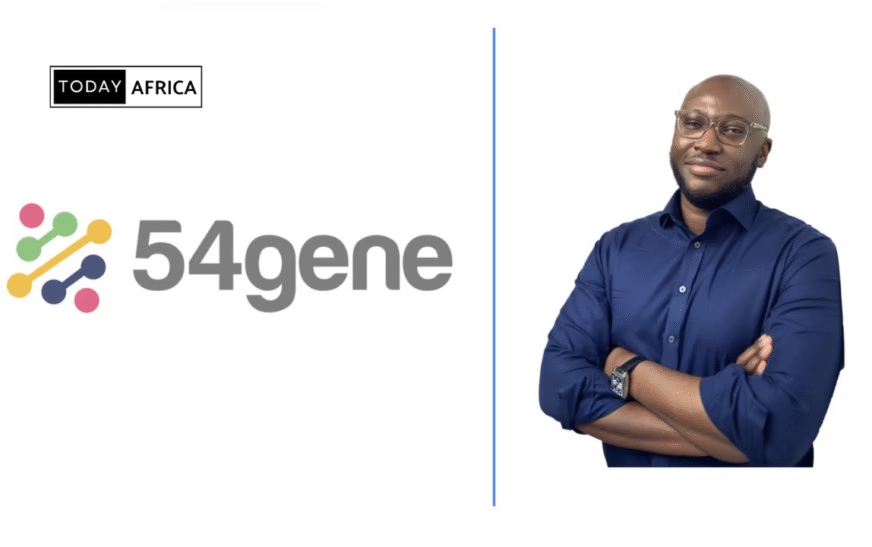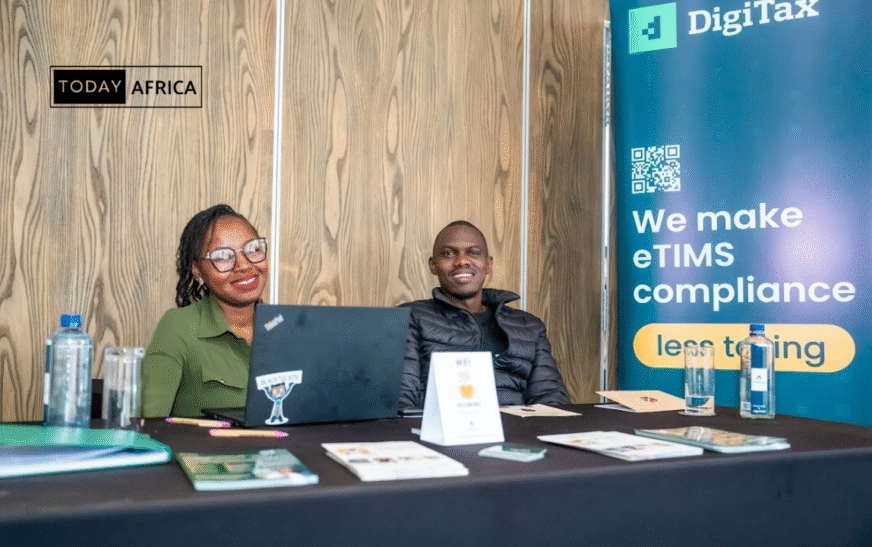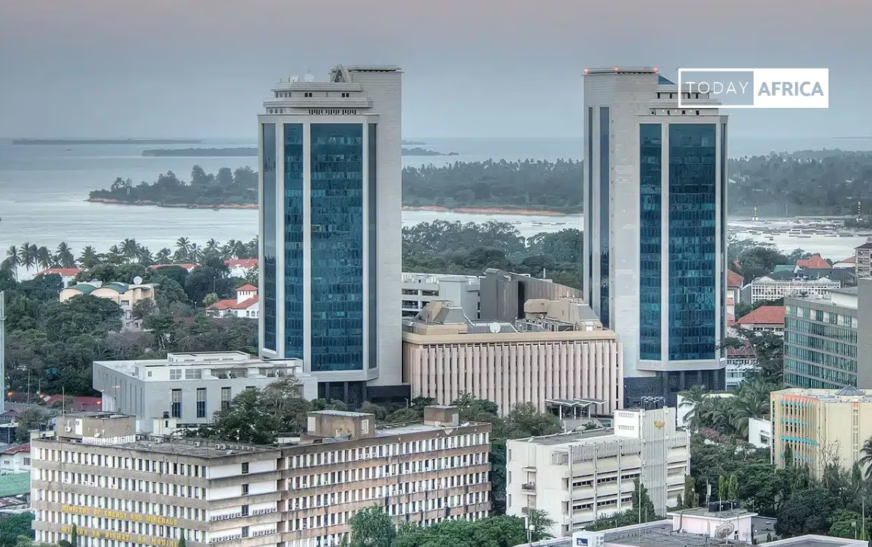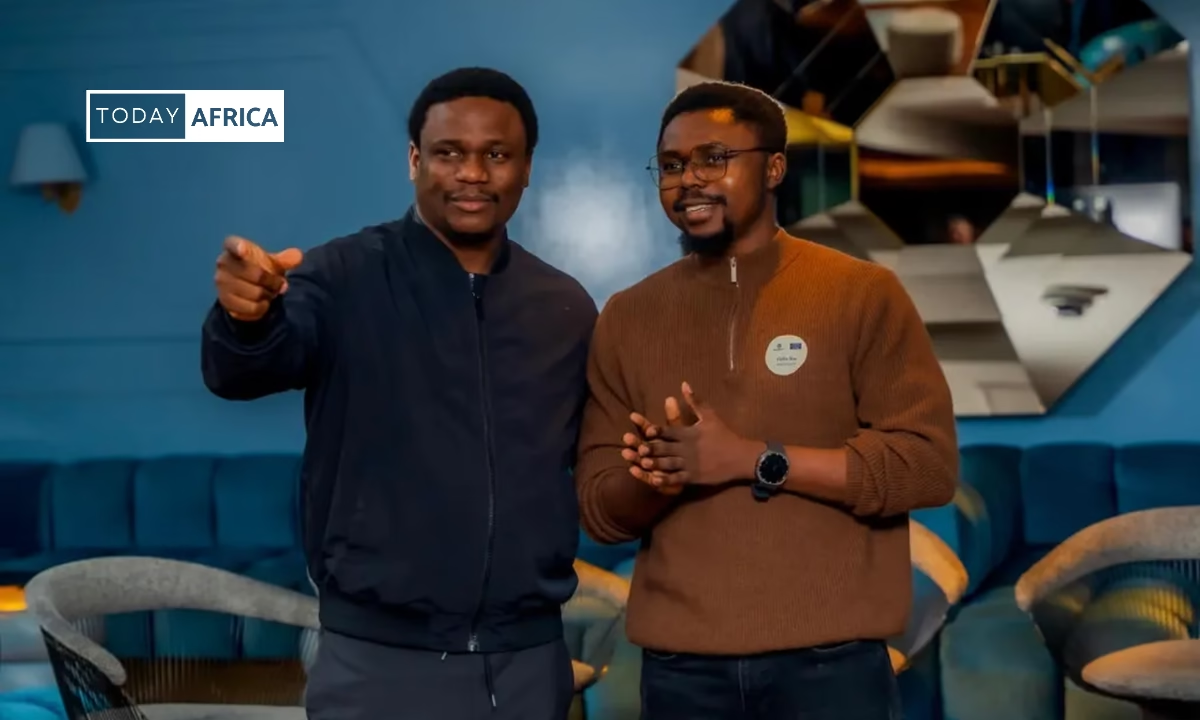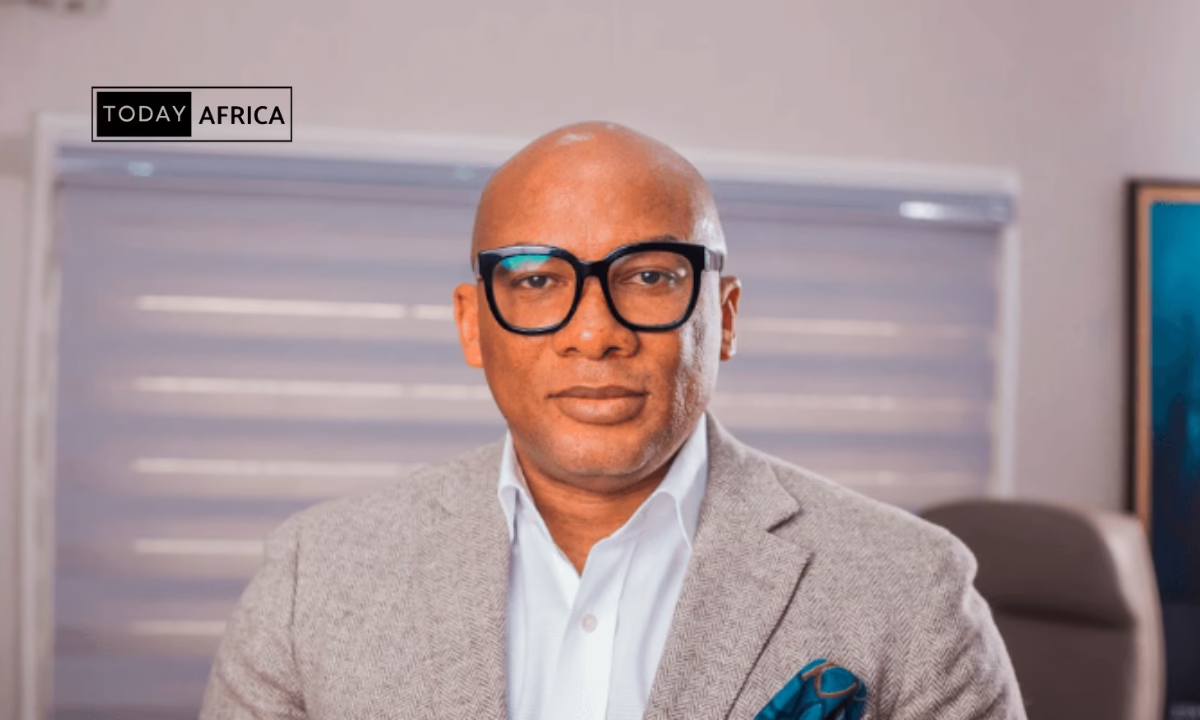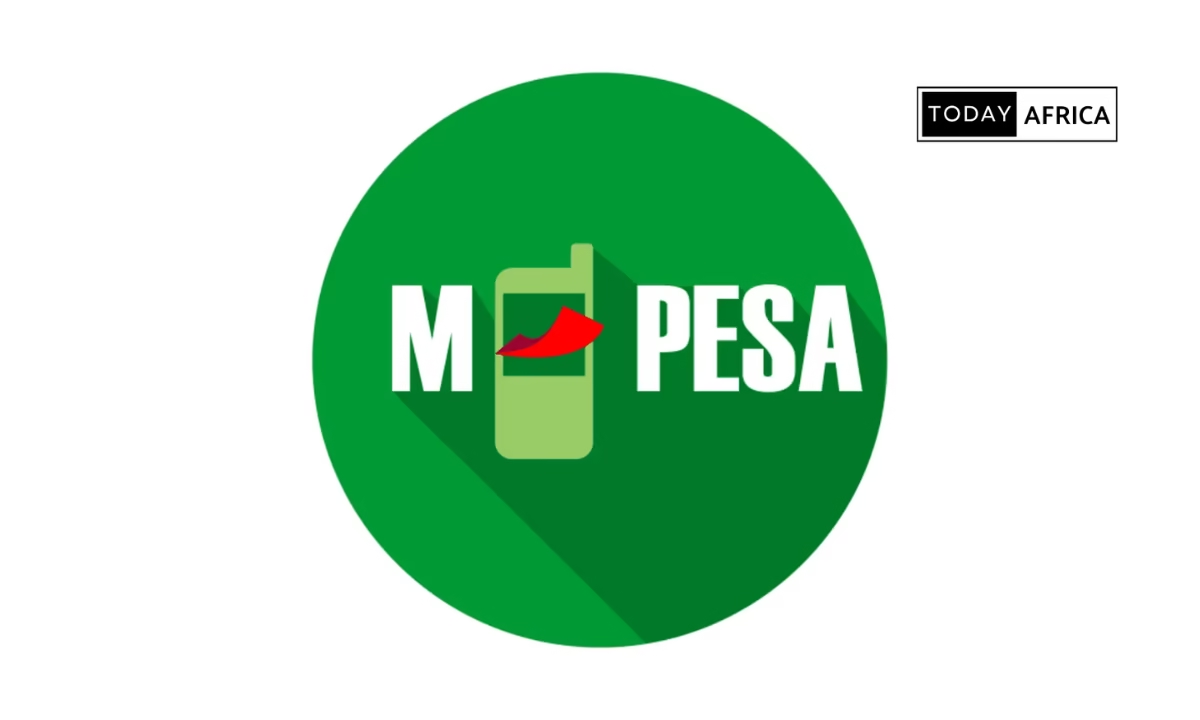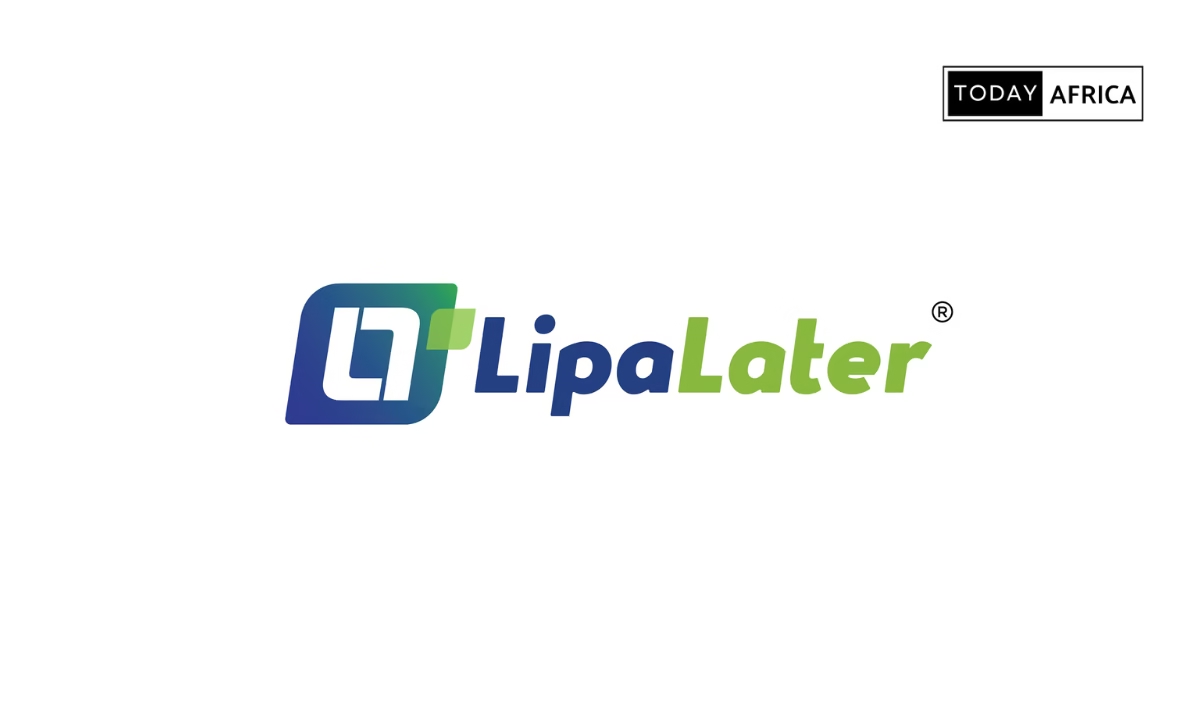In 2019, Nigerian scientist Dr. Abasi Ene-Obong founded 54gene to tackle a glaring global health inequity: Africa’s vast genetic diversity was barely represented in global research, with less than 3% of genomic data coming from the continent.
The mission was clear — build Africa’s first large-scale genomic database, revolutionize drug discovery for African populations, and correct decades of biomedical exclusion.
Backed by over $45 million from Y Combinator, Adjuvant Capital, and others, 54gene rapidly built advanced sequencing labs in Nigeria, forged hospital partnerships, and became a key COVID-19 testing provider. It was celebrated as a biotech trailblazer and a model of African innovation.
This article traces inside 54gene’s journey — its bold beginnings, rapid ascent, and steep decline — offering lessons for entrepreneurs, investors, and policymakers navigating Africa’s emerging biotech frontier.
Disclaimer: The data in this week’s episode of StoryLab is based on publicly available funding information as of August 2025 from reliable sources such as Time.com, TechCrunch, Quartz, IFC news, Notadeepdive, Biospace, and industry blogs.
Founding Story (2018–2019)
54gene was conceived in early 2019 by Nigerian-born Dr. Abasi Ene-Obong and co-founders Ogochukwu Osifo, Damilola Oni and Gatumi Aliyu.
They were motivated by the stark “genomics gap”: Africans are vastly underrepresented in global genetic databases. As reported in TechCrunch, nearly 90% of genome-wide association study data were of European descent, with under 3% from African populations.
This gap means that many drugs and diagnostics may not work well for Africans. To address this, Ene-Obong (a trained physician-turned-consultant) launched 54gene “in early 2019” as a “Lagos-based genomics lab” focused on African DNA.
The company was named for Africa’s 54 countries, reflecting its pan‐African mission. Ene-Obong later described 54gene as “the fulfillment” of his ambition to bring African data into global healthcare.
54gene’s early strategy was to build an African biobank and research infrastructure. The team partnered with local hospitals and research institutions to recruit participants.
For example, 54gene collaborated with 17 hospitals across all six geopolitical zones of Nigeria to collect blood, tissue and saliva samples. In 2019 it also spun out the African Center for Translational Genomics (ACTG), a nonprofit offering grants, fellowships and training to African scientists.
ACTG’s first project was the “Nigerian 100K Genome Project” – a consortium aiming to sequence ~100,000 Nigerian volunteers to study diseases like cancer, diabetes, and sickle-cell.
These initiatives laid the groundwork for 54gene’s data platform. By 2022, the effort had amassed over 300,000 DNA samples from African donors, an unprecedented African genomics resource.
Major early milestones followed swiftly. In mid-2019, the startup entered Y Combinator and closed a $4.5 million seed round, at the time a record for a Nigerian health‐tech startup. By April 2020, it had secured a $15 million Series A led by Adjuvant Capital (backed by Gates/IFC/Novartis).
In September 2021, 54gene announced a $25 million Series B led by Cathay AfricInvest. In all, the company raised roughly $45M between 2019–2021.
The Series A PR emphasized that these funds would be used to “scale operations in genetics, bioinformatics, preclinical, clinical and commercial programs”.
Likewise, the Series B press release said the new capital would “expand 54gene’s capabilities in sequencing, target identification and validation, and precision medicine clinical trials” across Africa.
Key operational steps
Key operational steps included opening state-of-the-art labs and offices. As one report notes, 54gene’s headquarters were split between Lagos and Washington, D.C., and it built an advanced genetics sequencing lab in Lagos (with Illumina machines) by late 2020.
This on-site lab allowed 54gene to perform whole-genome (WGS) and whole-exome (WES) sequencing locally (85% of known disease variants are detected in WES).
The move from a data‐platform concept to an actual biotech facility was a defining shift: in summer 2020, the company invested in high-throughput genetic processing and even BSL-3 containment in Nigeria.
Other milestones included partnerships with governmental and private bodies, and a high-profile role in Nigeria’s COVID-19 response (see below).
Funding History, Investors, and Uses of Capital
54gene’s fundraising trajectory was rapid. The Seed Round (July 2019) raised about $4.5M from early backers (including Y Combinator alumni and African VCs).
The Series A (April 2020) brought in $15M, led by Adjuvant Capital (IFC/Novartis/Gates) with participation from Raba Capital, V8 Capital, Ingressive Capital, Y Combinator (follow-on), Better Ventures, Fifty Years, KdT Ventures, Aera, and Pioneer Fund.
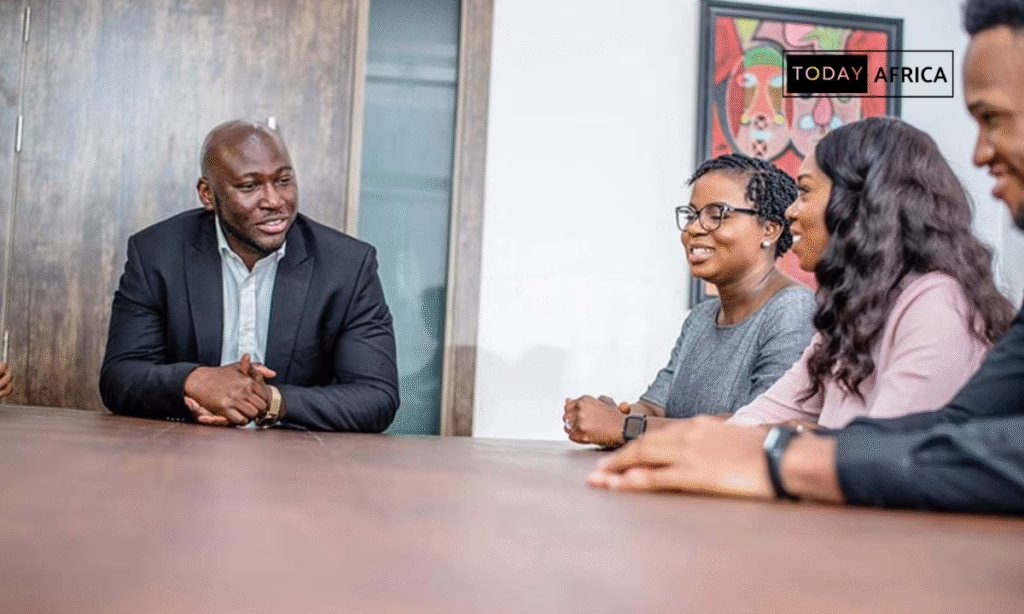
The Series B (September 2021) added $25M, led by the Cathay AfricInvest Innovation Fund, with Adjuvant, U.S. International Development Finance Corp., KDT Ventures, Plexo Capital, Endeavor Catalyst, Ingressive, and others~.
A Cathay press release noted this brought 54gene’s total funding to “more than $45M since being founded in 2019”.
The table below summarizes these rounds:
| Year (Round) | Amount (USD) | Lead Investor(s) | Use of Funds (Key purposes) |
|---|---|---|---|
| Jul 2019 (Seed) | $4.5M | Y Combinator network, V8, Raba, etc. | Initial platform build, sample collection partnerships |
| Apr 2020 (Series A) | $15M | Adjuvant Capital | Expand R&D labs, build high-throughput genetics lab in Nigeria, hire staff |
| Sep 2021 (Series B) | $25M | Cathay AfricInvest Fund | Scale sequencing/genomics capabilities, target identification, and clinical trials across Africa |
| Total raised | ~$45M (2019–2021) | See above | Sum of above uses |
Each round was explicitly used to grow infrastructure and operations. The Series A press release said the capital would “scale operations in support of generating novel insights from human genetics research”, bolstering genetics, bioinformatics, preclinical, clinical, and commercial programs.
In practice this meant building new labs, recruiting scientists, and enhancing sample-processing pipelines. The Series B release similarly promised to “expand 54gene’s capabilities in sequencing… and precision medicine clinical trials, enabling drug discovery in Africa”.
In sum, investors expected 54gene to use each infusion of cash to set up permanent biotech resources in Africa (labs, staff, partnerships) that could drive future pharmaceutical development.
See Also: Inside M-Pesa’s Journey: An Idea That Changed the Way Africa Moves Money
Strategies that Fueled Growth
54gene’s rise was fueled by bold, high-visibility strategies that distinguished it in African health-tech.
1. Cutting-edge biotech infrastructure
The company invested early in advanced genomics tools right in Nigeria. For example, 54gene’s Lagos lab — built in partnership with Illumina — housed next-generation sequencers capable of whole-genome and whole-exome sequencing.
These facilities let 54gene analyze African DNA locally instead of shipping it abroad. Such infrastructure was unprecedented on the continent.
In its Series A presentation, 54gene touted plans to set up “state-of-the-art research labs with high-throughput genetic processing and BSL-3 capabilities in Nigeria”.
By mastering these technologies in-country, 54gene gained a first-mover advantage in African precision medicine. The image below shows researchers working in 54gene’s Lagos lab, symbolizing this advanced biotech commitment:
2. Strategic partnerships
From the outset 54gene forged alliances that amplified its mission. It worked closely with Nigerian hospitals and regulators to access samples – as IFC reported, 54gene “collaborates with a network of Nigerian hospitals, healthcare systems, and regulators to gather blood and tissue samples”.
These collaborations were nationwide (17 hospitals in all geopolitical zones), ensuring broad ethnic representation in the data. Beyond collection, 54gene also sought institutional partners for research.
In 2020, it teamed up with Nigerian scientists on a major study of non-communicable diseases, and government bodies like the Nigerian CDC and medical institutes became key collaborators. Globally, 54gene actively engaged biotech investors and pharma.
Its Series A and B backers – including giants like Gates and Novartis – provided not just funding but international credibility. Company leaders also spoke of impending partnerships with multinational pharmaceutical companies.
For instance, an IFC profile noted that “a number of multinational pharmaceutical biotech companies are in the process of partnering with 54Gene” and that 54gene would work with research institutions and governments to make genomics a standard of care.
3. COVID-19 pivot and public role
The COVID-19 pandemic, while tragic, offered 54gene an opportunity to showcase its value. Early in 2020, 54gene pivoted into pandemic response, using its lab expertise and network.
It launched a “Nigeria COVID-19 Testing Support Fund”, seeding it with a $150K donation and raising another $350K from partners like Union Bank. Within weeks 54gene deployed containerized mobile labs across Nigeria to run PCR tests.
As a result, the startup became “one of Nigeria’s largest providers of COVID testing” during the pandemic.
This pivot won huge media attention and goodwill: 54gene’s CEO was later dubbed a national “COVID-19 Hero” by local press.
The pandemic work also deepened 54gene’s ties with public health institutions (e.g., supporting the NCDC), further raising its profile among investors and policymakers.
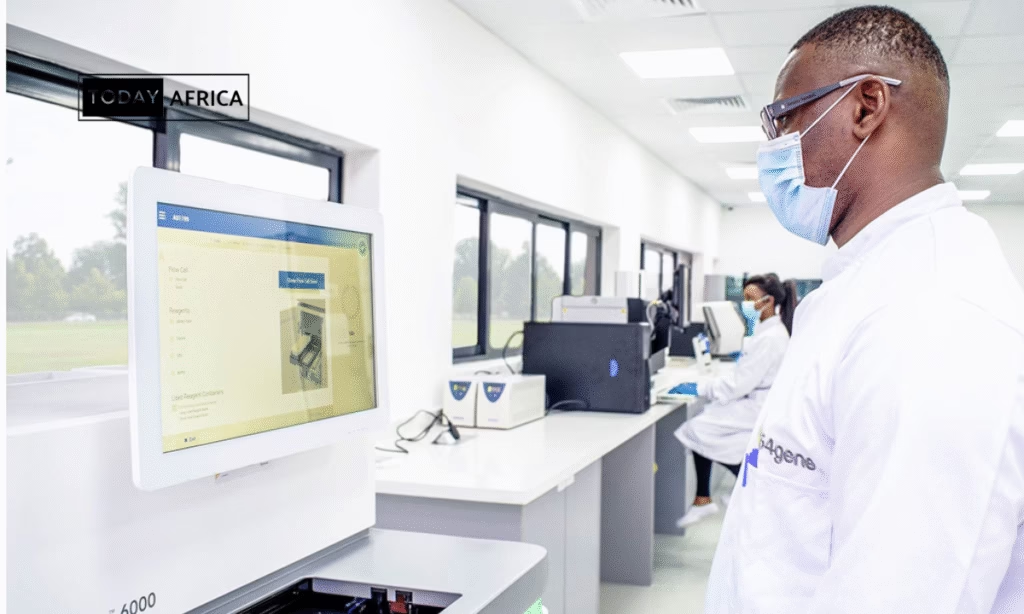
4. First-mover positioning
54gene styled itself as Africa’s pioneering precision-medicine company. Early press often emphasized this narrative. Its COO remarked that 54gene wanted to “add Africa to the global genomics innovation map”.
The startup portrayed itself as bridging worlds – one global genetic database, one local African clinic.
For example, 54gene’s team frequently contrasted itself with foreign firms: as one executive explained, big Western healthcare companies often struggle in Africa’s fragmented systems, but 54gene’s local team “knows how to move through the systems in Africa” and hence has a unique niche.
This positioning as the first African-led genomics drug-discovery hub attracted media buzz (TIME and others featured 54gene as an innovation story) and helped justify its high valuation.
Competition in the Healthtech Ecosystem
In Nigeria and Africa at large, 54gene occupied a relatively unique niche in biotech. Unlike consumer genetics firms abroad (e.g., 23andMe) or sequencing vendors (Illumina), 54gene was a first-of-its-kind, Africa-centric genomics R&D company.
Global players like Illumina sell equipment worldwide but have not directly gathered African DNA; consumer genomics companies focus on ancestry tests, not drug targets.
By contrast, 54gene combined both – it ran its own sequencing labs while developing partnerships for pharmaceutical R&D. Locally, there were few direct competitors.
Nigerian startups like Helix Biogen Institute offer genetic testing and research services, and companies such as LifeBank focus on medical logistics and diagnostics – but none took on the specific challenge of building an African biobank to feed global drug development.
The main competitive pressure was the absence of existing infrastructure. As one insider noted, 54gene essentially had to create the market: biotech equipment is expensive and rare in Nigeria.
A TechCabal report estimated that a single sequencing machine could cost ~$1 million, and each full genome test about $700.
These costs meant there was no local ecosystem of genomics labs to compete with. Instead, 54gene filled that void. Its local roots also differentiated it from foreign entrants.
As 54gene’s COO put it, 54gene’s real advantage over multinationals was its insider knowledge of African systems – “our real niche” was bridging African data to global health.
In summary, 54gene stood largely alone in its segment. It did share some goals with global initiatives (e.g., H3Africa consortium) and with national efforts (Nigeria’s own genome projects), but those were government/backed research endeavors, not for-profit startups.
Compared to existing health-tech firms in Nigeria, 54gene was unique in its scale and focus. Its main “competition” was the difficulty of the task itself – the lack of genomic culture on the continent – rather than a rival company.
Impact 54gene Had on the Society
Although its commercial fate faltered, 54gene made significant societal contributions.
1. Building local capacity
The company directly trained and employed a cadre of African scientists.
By 2020, it was working with over 300 local researchers, clinicians, and geneticists across Nigeria and beyond, many of whom gained cutting-edge genomics experience.
Through ACTG fellowships, internships and grants, it supported dozens of young African geneticists. In this way, 54gene helped kick-start a new community of genomics experts on the continent.
2. Expanding labs and diagnostics
54gene’s labs themselves boosted capacity. It built a high-throughput sequencing lab in Lagos and later set up a subsidiary called 7River Labs to establish molecular diagnostic centers in major Nigerian cities.
These centers (in Lagos, Abuja, Kano, Port Harcourt, etc.) offered PCR and gene-based tests that were previously unavailable locally.
During COVID, its mobile labs added thousands of testing slots in underserved areas. In effect, 54gene expanded Nigeria’s laboratory footprint, making advanced diagnostics more accessible.
3. Genomic data and research
Perhaps 54gene’s biggest scientific impact was increasing African representation in global genetics. Its pan-African biobank collected hundreds of thousands of samples – far more than any prior effort in Nigeria.
By some accounts, it had the largest African DNA repository in existence by 2022.
This data has already started to fuel research: in 2022, a Nigerian-led consortium published a Nature Genetics paper (the “Nigerian 100K Genome Project”) on non-communicable disease genetics.
More recently, a Cell Genomics study sequenced nearly 500 Nigerians to chart genetic diversity. These projects owe much to 54gene’s groundwork.
Read Also: Inside Interswitch’s Journey: From Pioneering Payments to Shaping Africa’s Fintech Future
4. Community and equity
By centering African genomes, 54gene highlighted issues of health equity and “helicopter science.” It raised public awareness about why African data matters.
One executive explained that traditional “helicopter science” (outside researchers taking samples out of Africa) is not 54gene’s model; instead the company insists on keeping research and benefits local.
Its work underscored to policymakers the value of investing in local R&D infrastructure.
Key statistics
By 2022, 54gene’s biobank held ≈300,000+ African DNA samples. It had trained dozens of scientists (through ACTG) and engaged 300+ collaborators.
The company’s COVID labs alone processed millions of tests at the height of the pandemic.
These contributions advanced national goals (e.g., identifying genetic causes of disease) and provided a model for what African-led biotech can achieve.
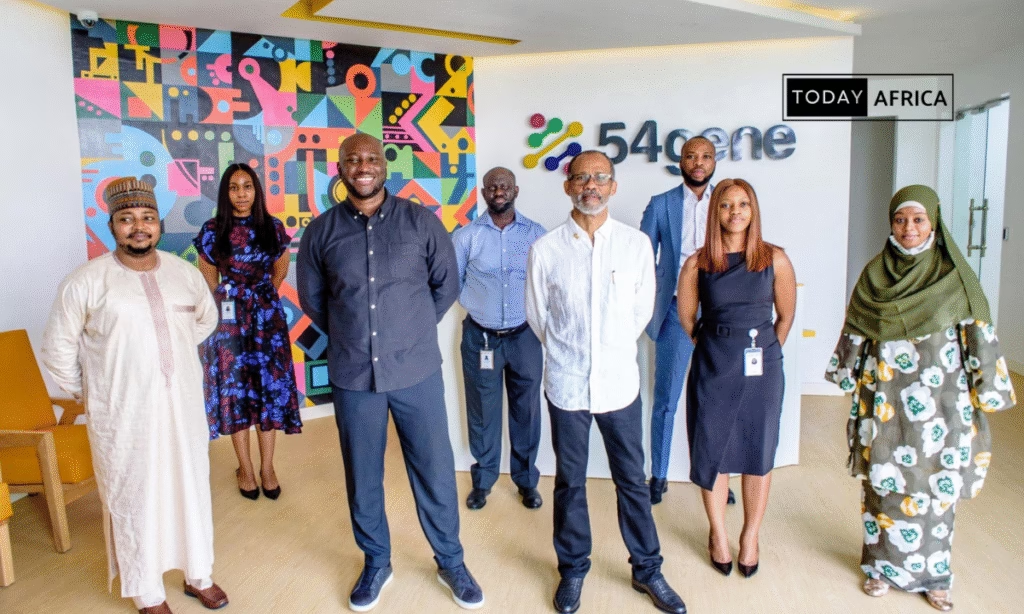
Challenges 54gene Faced
Despite its early promise, 54gene encountered daunting internal and external challenges.
1. Operational costs and talent
Sequencing and biotech are inherently expensive, especially in Africa. As reported, the company “poached top talent from prominent firms,” which “didn’t come cheap,” and acquired equipment costing millions.
According to insiders, a single genome sequence could cost ~$700 in 2021. High salaries and capex drove a steep burn rate.
Moreover, recruiting and retaining skilled genomics personnel in Nigeria was difficult; by late 2022, many employees left or were cut as the company restructured.
2. Dependence on pandemic
54gene’s COVID pivot was both a boon and a vulnerability. At its peak, the company built major COVID testing capabilities, but these were not permanent revenue sources.
When Nigeria relaxed testing mandates in 2022, demand collapsed, and 54gene had to lay off ~30% of its workforce.
Many hires (labs and support staff) had been tied to COVID operations, and the sudden drop in tests revealed the fragility of that business line.
As one analyst put it, 54gene “didn’t seem to anticipate an end to mandatory COVID testing, which killed that revenue line”.
3. Strategic missteps
Critics argue 54gene overextended. After COVID tests slowed, the startup bet heavily on creating a domestic diagnostics chain (7River Labs) and on advanced lab capabilities.
It opened multiple testing hubs in major cities with ambitious plans for 2022.
Three insiders told Notadeepdive that during this period, 54gene ramped up hiring and spent lavishly on infrastructure (sample centers, high-tech labs) without securing the expected returns.
In retrospect, those investments did not pay off: 7River Labs and mobile labs were costly to run and did not generate sustainable profits. The company “hemorrhaged money” as it “diversified into diagnostics”.
In short, 54gene may have scaled too fast into too many verticals before establishing reliable revenue in its core genomics business.
4. Governance and funding pressures
Managing a fast-growing biotech startup posed leadership challenges. In October 2022, founder Abasi Ene-Obong resigned amid reports of internal disputes.
Sources described a “misalignment of ideas” in the executive team and noted that his exit was made “messy” by ongoing legal and financial issues. After his departure, interim CEO Teresia Bost (formerly General Counsel) led another round of layoffs.
Observers reported “plenty of lawsuits and all kinds of fraud allegations” surrounding 54gene’s operations during the collapse, suggesting governance and cash-flow issues.
On the funding side, after the 2021 Series B, the company struggled to raise new capital on its earlier terms. By late 2022, it faced a down-round: its valuation plunged to ~$50M (from ~$170M a year earlier) as new financing fell through.
Overall, 54gene was caught between high cash burn and limited funding runway – a precarious situation for any deep-tech venture.
5. Market and regulatory hurdles
Operating in Nigeria’s low-income health system added challenges. Unlike US/European markets, few hospitals or insurers could immediately pay for expensive genomic tests or trials.
The company had to rely largely on grants and partner funding for its research pipeline. Additionally, navigating Nigeria’s bureaucratic environment – customs duties on equipment, slow ethics approvals, etc. – likely hampered speed (though detailed reports on this are scarce).
Talent retention was also an issue; some key team members had been poached from global firms, and commands for advanced biotech skills outstripped supply.
In summary, 54gene’s downfall was not due to a single factor but an accumulation of strategic and environmental challenges.
An industry observer summed it up: the startup faced “cash flow issues, inability to raise follow-on funding, and a business [model] that was always going to burn cash before really seeing results”.
In other words, its long-term drug-discovery vision did not yield immediate revenue, making the company highly vulnerable when investor sentiment turned or pandemic-related income evaporated.
Why 54gene Failed and Lessons Learned
By 2023, 54gene’s ambitious trajectory unraveled under the weight of those challenges. Key reasons for its collapse include:
1. Overexpansion and cash burn
54gene aggressively built labs, platforms and diagnostic hubs, but these ventures consumed capital much faster than they generated income.
As one report noted, the company “created multiple business functions to support its COVID testing” and hired extensively, only to see those revenue streams disappear.
Its foray into diagnostics (7River Labs) was meant to be a quick pivot but instead became a costly diversion.
The result was a financial squeeze: when Covid testing ended, 54gene had few alternative revenue channels, forcing layoffs and emergency funding measures.
2. Dependence on external funding
The company always relied on investor capital, with no product selling profitably.
Even in biotech, this is not unusual, but 54gene’s scale meant it burned through tens of millions before any drug target was realized.
When markets tightened, investors were unwilling to fund another large round. The company ultimately took a “down round” at a sharply reduced valuation, eroding both cash and confidence.
A cautionary quote from an analysis puts it bluntly: “54gene’s focus on African genomic research means that it will only make revenue when this research is bought or used to create pharmaceuticals” – a long horizon indeed.
3. Pandemic tailwinds and fall
The COVID-19 surge gave 54gene a temporary boost, but the company’s fortunes were too tied to that transient wave. When testing demand fell, the business model abruptly lost momentum.
Reliance on pandemic-related income was a strategic mistake: it masked the fact that the core genomics enterprise still needed years of development.
Once the “COVID bubble” burst, all weaknesses were exposed. The layoffs in mid-2022 (cutting ~30% of staff) and the resignation of the CEO were the most visible signs of this reversal.
4. Governance and execution issues
Media reports and insiders suggest internal missteps also contributed. After Ene-Obong left, the company appeared adrift. There were reports of salary cuts for staff and last-minute equity swap promises for runway.
Ambiguity over resource allocation (R&D vs. diagnostics vs. testing) may have caused costly delays. Some employees later said they were assured of funding through 2022, only to find 54gene suddenly in crisis.
In short, 54gene’s high-level vision outpaced its organizational stability.
See Also: Inside Moniepoint’s Journey: From POS Terminals to Africa’s Fintech Powerhouse
Lessons for entrepreneurs and investors
54gene’s story offers several important takeaways:
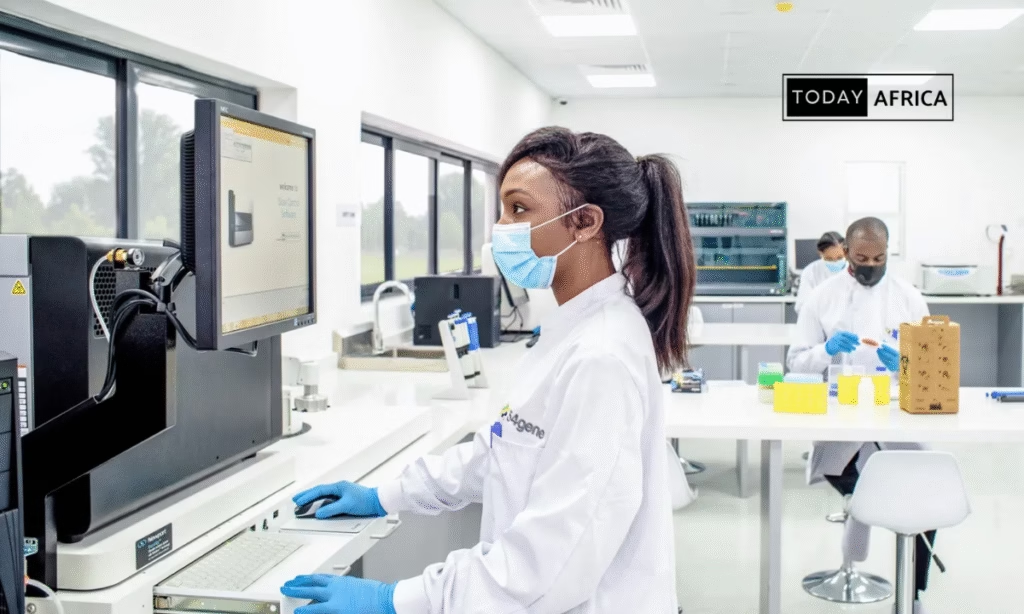
- Governance and transparency are critical. Rapid growth in a capital-intensive field demands robust board oversight and clear financial controls. As observers noted, 54gene’s collapse involved disputed leadership changes and legal allegations. Future startups should build disciplined governance from day one, especially when handling donor funding and government partnerships.
- Beware of overdependence on short-term booms. The COVID pivot shows both the promise and peril of chasing hot opportunities. Entrepreneurs should plan for how to survive when a temporary windfall (like pandemic testing) inevitably fades. Diversifying revenue and having a realistic multi-year plan is vital.
- Scale deliberately with product-market fit. In Africa’s low-income markets, selling high-end biotech is inherently challenging. 54gene perhaps tried to do too much too soon (labs, diagnostics, trials) without having a proven revenue engine. Startups should validate their core service (e.g. selling sequencing/genotyping) before spinning off into new domains. Staged growth can preserve capital.
- Invest in local ecosystems. One clear success is that 54gene proved the feasibility of African-led genomics. The company showed there is talent and capability in Africa to run advanced labs and collaborate on big science. Policymakers and industry should build on this legacy by supporting infrastructure (e.g. data rules, funding bodies, talent programs). Indeed, even in failure, 54gene has taught international stakeholders the potential value of African genomics – hopefully encouraging more thoughtful support rather than discouragement.
- Set realistic expectations with investors. In Africa’s nascent biotech scene, patience is required. Some commentators observe that 54gene was overhyped as a sure hit, which may have put undue pressure on management. Future investors might take a more phased approach, aligning milestones to funding tranches and being prepared for long timelines.
In effect, 54gene’s rise and fall is a startup story about the extremes of African biotech: it highlights both the enormous opportunity and the steep difficulties.
As one analyst summarised, biotech ventures like 54gene will inherently “burn cash before really seeing results”.
The key lessons – strong leadership, careful scaling, and anchored financial planning – will be crucial for any entrepreneur or policymaker aiming to build on 54gene’s legacy.
Conclusion
54gene’s story is a study in contrasts. On one hand, it unlocked unprecedented promise: it galvanized global attention on Africa’s genomic needs, built labs and data assets, and trained a new generation of African scientists.
It proved that an African startup could tackle billion-dollar biotech projects.
On the other hand, its collapse underscores the harsh realities of the tech and health markets: cutting-edge science takes time, and the path from DNA sample to drug is long and uncertain.
The biggest insight is that local solutions matter – but they must be grounded in sustainable execution. 54gene demonstrated that with enough vision and capital, an African-led company can create world-class infrastructure.
Yet it also showed that a fantastic idea and ample funding are not enough without solid revenue models and risk management. For entrepreneurs, the takeaway is to balance boldness with pragmatism.
For investors and policymakers, 54gene highlights the need to nurture biotech carefully: celebrate the vision, but expect drawn-out development and insist on good governance.
In the end, 54gene’s legacy will influence others. Some lessons have already been absorbed – for example, Ene-Obong’s new venture, Syndicate Bio (launched 2023) is approaching African genomics with a leaner strategy.
The industry has become more cautious but remains convinced of the science: as geneticist Charles Rotimi has said, private African genomics enterprises have a vital role in correcting global biases.
54gene’s journey, though it ended in liquidation, laid the groundwork for a more equitable research future. Its rise-and-fall story will inform the next wave of African biotech pioneers as they strive to turn genomic promise into sustainable health impact.
Sources: This analysis draws on interviews, news reports, company press releases, and expert commentary, including Time.com, TechCrunch, Quartz, IFC news, Notadeepdive, Biospace, and industry blogs.
Leave a comment and follow us on social media for more tips:
- Facebook: Today Africa
- Instagram: Today Africa
- Twitter: Today Africa
- LinkedIn: Today Africa
- YouTube: Today Africa Studio

